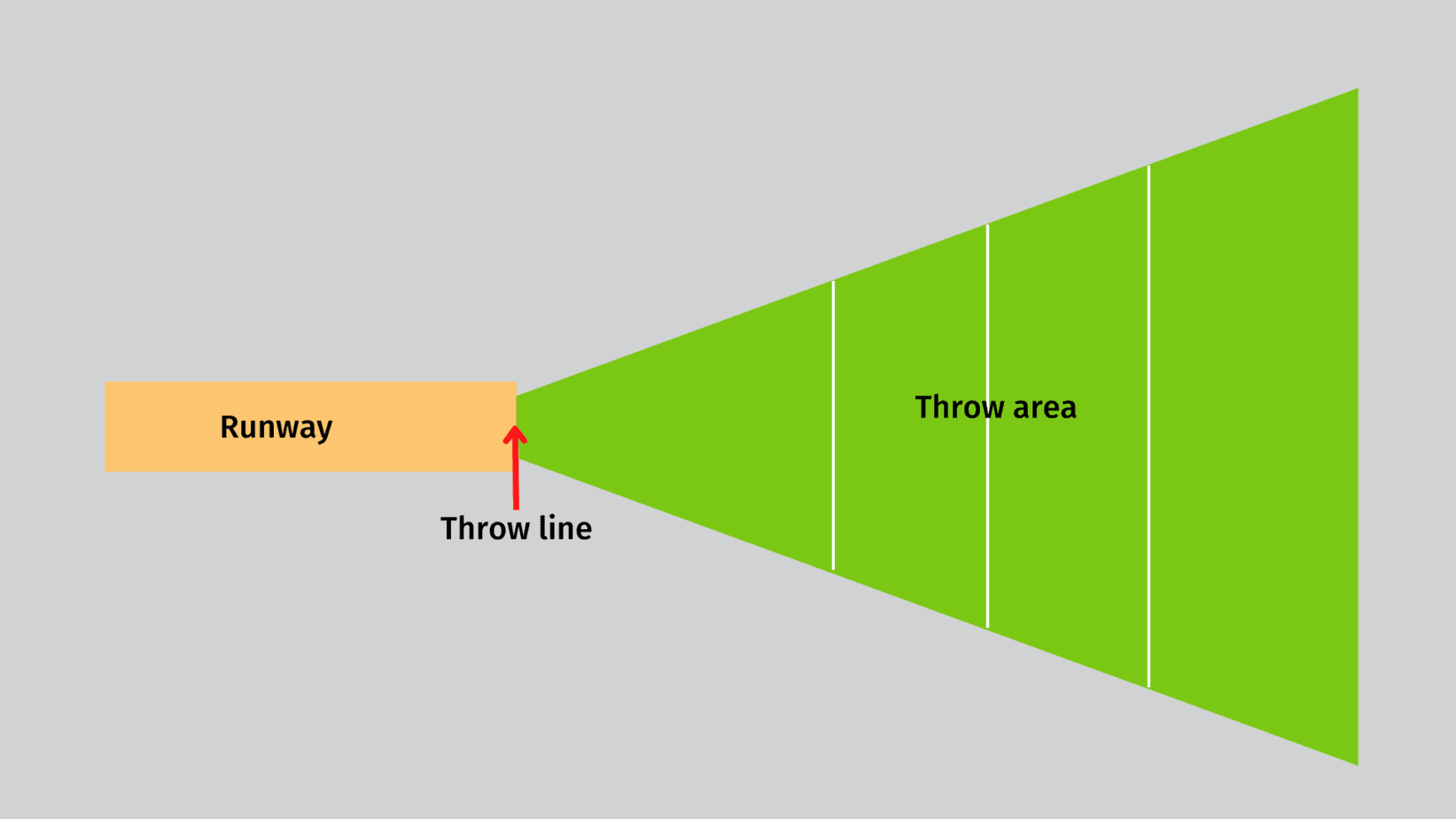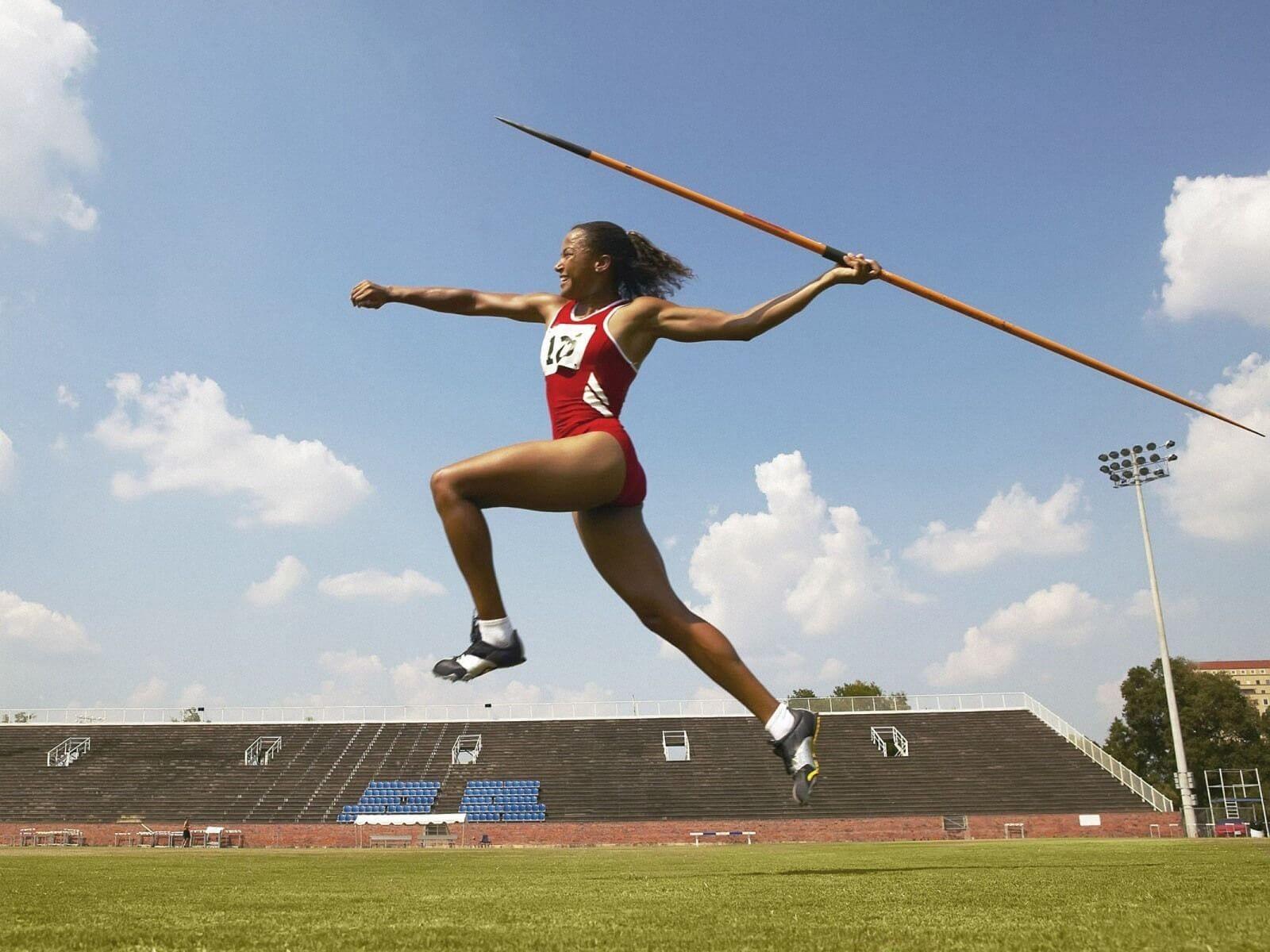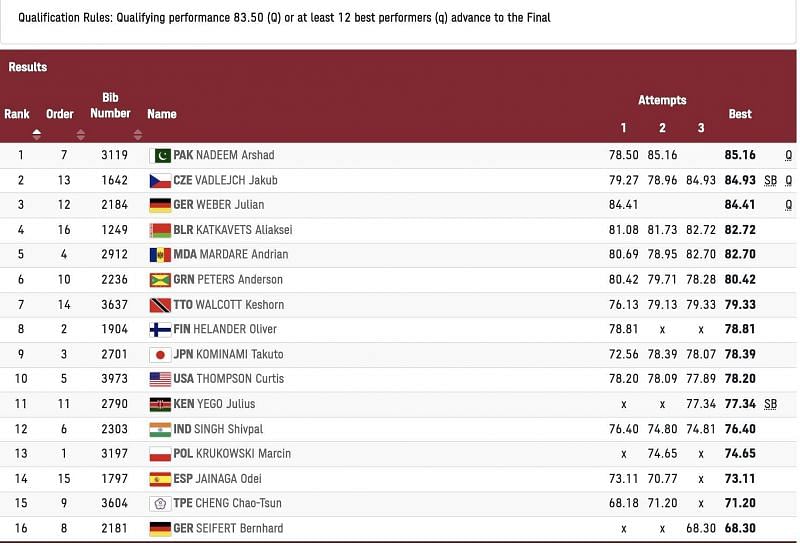History and Evolution of the Javelin Throw

The javelin throw, a timeless test of strength, accuracy, and athleticism, has evolved significantly throughout history, transitioning from ancient hunting practices to a modern Olympic discipline. Its journey reflects the changing nature of human ingenuity and the relentless pursuit of athletic excellence.
Ancient Origins and Early Evolution
The javelin throw’s roots can be traced back to ancient times, where it served a practical purpose in hunting and warfare. Spear-throwing was a crucial skill for survival, and its importance is reflected in ancient art and mythology. The earliest documented javelin competitions date back to the ancient Greeks, who incorporated the event into their athletic festivals. The javelin throw was a key part of the pentathlon, a five-event competition that tested a warrior’s overall athletic prowess.
The Emergence of Standardized Rules
In the 19th century, the javelin throw began to take shape as a formalized sport. The first recorded javelin competition with standardized rules was held in Ireland in 1870. These early competitions involved throwing a wooden javelin with a leather strap at the end. The javelin was held by the strap, and the thrower was required to launch the javelin overhand.
The Birth of the Modern Javelin
The development of the modern javelin in the early 20th century revolutionized the sport. The introduction of a metal tip and a center of gravity closer to the tip resulted in longer throws and increased safety. The first international javelin competition using the modern javelin was held in 1912, marking a pivotal moment in the sport’s evolution.
The Inclusion in the Olympic Games
The javelin throw made its debut in the Olympic Games at the 1908 London Olympics. However, the rules were still evolving, and the javelin used in the competition was a heavier, wooden model. The modern javelin was introduced in the 1932 Olympics, and the event quickly gained popularity as a thrilling and demanding athletic contest.
Significant Rule Changes and Technological Advancements
The javelin throw has been subject to several rule changes throughout its history, aimed at enhancing safety and promoting fair competition. The most significant rule change occurred in 1986, when the javelin’s center of gravity was moved further forward. This change was intended to reduce the distance of throws and prevent athletes from throwing the javelin too far.
Influential Figures in the History of the Javelin Throw, Athletics at the summer olympics – javelin throw schedule
The history of the javelin throw is filled with remarkable athletes, coaches, and rulemakers who have shaped the sport. Finnish javelin thrower Matti Järvinen is widely regarded as one of the greatest javelin throwers of all time. He set a world record in 1930 that stood for 14 years. Another influential figure is the American coach, Bud Held, who developed innovative training methods that helped to revolutionize the javelin throw. The development of new javelin designs, materials, and training techniques has also contributed to the sport’s evolution.
Javelin Throw Techniques and Strategies

The javelin throw is a technical event that requires a combination of strength, speed, and precision. Athletes must master the complex movements and strategies involved in launching the javelin for maximum distance.
Phases of the Javelin Throw
The javelin throw is divided into four distinct phases: the grip, the run-up, the delivery, and the follow-through. Each phase is crucial for maximizing distance and achieving a successful throw.
- Grip: The grip is the foundation of the throw, influencing the javelin’s trajectory and stability. Athletes typically grip the javelin with their dominant hand near the javelin’s center of gravity, while their non-dominant hand provides support and balance. The grip should be firm but not too tight, allowing for a smooth and controlled release.
- Run-up: The run-up is a controlled acceleration phase, building momentum and preparing the athlete for the delivery. The run-up typically consists of 10-15 steps, with the athlete maintaining a balanced and relaxed posture. As the athlete approaches the throwing line, they gradually increase their speed and shift their weight to the throwing side.
- Delivery: The delivery is the most critical phase, where the athlete transfers their momentum to the javelin and launches it with maximum force. The athlete’s body should be in a powerful, yet controlled position, with the javelin held high and the throwing arm extended. The athlete then rotates their body and hips, propelling the javelin forward with a forceful snap of the wrist and arm.
- Follow-through: The follow-through is the final phase, where the athlete completes the throwing motion and maintains balance. The athlete’s body should continue to rotate and extend in the direction of the throw, ensuring a smooth and controlled release. The follow-through is essential for achieving accuracy and preventing injury.
Javelin Throw Techniques
There are several different javelin throw techniques, each with its own strengths and weaknesses.
- The “Western” Technique: This technique, popularized in the United States, involves a longer run-up and a more upright throwing motion. The athlete’s body is more vertical during the delivery, allowing for greater power and a higher release point. However, this technique can be less accurate than others.
- The “Finnish” Technique: This technique, developed in Finland, involves a shorter run-up and a more horizontal throwing motion. The athlete’s body is more horizontal during the delivery, resulting in a lower release point but potentially greater accuracy.
- The “Eastern” Technique: This technique, popular in Eastern Europe, combines elements of both the Western and Finnish techniques. The athlete uses a longer run-up but maintains a more horizontal body position during the delivery, aiming for a balance of power and accuracy.
Factors Contributing to a Successful Javelin Throw
Several factors contribute to a successful javelin throw, including biomechanics, speed, and accuracy.
- Biomechanics: The athlete’s body mechanics are crucial for generating power and maintaining control during the throw. Proper form, including a balanced posture, efficient use of body rotation, and a smooth release, is essential for maximizing distance.
- Speed: The athlete’s speed during the run-up is directly related to the javelin’s velocity at release. A faster run-up translates to a faster javelin, resulting in a longer throw.
- Accuracy: Accuracy is equally important as distance. The athlete must be able to consistently throw the javelin within the desired sector, aiming for the optimal launch angle and trajectory to maximize distance.
The Javelin Throw at the Summer Olympics: Athletics At The Summer Olympics – Javelin Throw Schedule

The javelin throw, a test of strength, precision, and athleticism, has been a staple of the Summer Olympics since the inaugural games in 1896. This event has witnessed remarkable evolution, from its early days to the modern era, showcasing the incredible feats of human capability and the constant pursuit of excellence.
Medalists at the Summer Olympics
The javelin throw has been a part of the Summer Olympics since the very beginning, with the men’s event being included in 1896 and the women’s event added in 1984. Here is a table summarizing the medalists at each Summer Olympics:
| Year | Men’s Champion | Women’s Champion | Record-Breaking Throws |
|---|---|---|---|
| 1896 | Eric Lemming (SWE) | – | – |
| 1900 | Eric Lemming (SWE) | – | – |
| 1904 | Frank Irons (USA) | – | – |
| 1908 | Eric Lemming (SWE) | – | – |
| 1912 | Eric Lemming (SWE) | – | – |
| 1920 | Jonni Myyrä (FIN) | – | – |
| 1924 | Jonni Myyrä (FIN) | – | – |
| 1928 | Erik Lundqvist (SWE) | – | – |
| 1932 | Matti Järvinen (FIN) | – | – |
| 1936 | Gerhard Stöck (GER) | – | – |
| 1948 | Tapio Rautavaara (FIN) | – | – |
| 1952 | Cyrus Wong (USA) | – | – |
| 1956 | Egil Danielsen (NOR) | – | – |
| 1960 | Viktor Tsibulenko (URS) | – | – |
| 1964 | Paavo Berg (FIN) | – | – |
| 1968 | Jānis Lūsis (URS) | – | – |
| 1972 | Klaus Wolfermann (GDR) | – | – |
| 1976 | Miklós Németh (HUN) | – | – |
| 1980 | Dainis Kūla (URS) | – | – |
| 1984 | Arto Härkönen (FIN) | Tessa Sanderson (GBR) | – |
| 1988 | Tapio Korjus (FIN) | Petra Felke (GDR) | – |
| 1992 | Jan Železný (CZE) | Silke Renk (GER) | – |
| 1996 | Jan Železný (CZE) | Heli Rantanen (FIN) | – |
| 2000 | Jan Železný (CZE) | Trine Hattestad (NOR) | – |
| 2004 | Andreas Thorkildsen (NOR) | Osleidys Menéndez (CUB) | – |
| 2008 | Andreas Thorkildsen (NOR) | Barbora Špotáková (CZE) | – |
| 2012 | Keshorn Walcott (TRI) | Barbora Špotáková (CZE) | – |
| 2016 | Thomas Röhler (GER) | Sara Kolak (CRO) | – |
| 2020 | Neeraj Chopra (IND) | Liu Shiying (CHN) | – |
Notable Javelin Throwers
The javelin throw has seen its fair share of legendary athletes who have left an indelible mark on the sport.
- Eric Lemming (Sweden): Dominated the early years of the Olympics, winning gold in 1896, 1900, 1908, and 1912. He was also a successful pentathlete, showcasing his remarkable athleticism.
- Jonni Myyrä (Finland): Another dominant force in the early 20th century, Myyrä won gold in 1920 and 1924. He was known for his powerful throw and his ability to maintain his focus under pressure.
- Matti Järvinen (Finland): Set a world record in 1932 with a throw of 71.70 meters, a mark that stood for 14 years. He was also a skilled football player and a talented musician.
- Egil Danielsen (Norway): Revolutionized the javelin throw with his unique throwing style, which involved a dramatic backswing and a powerful follow-through. He won gold in 1956 and set a world record with a throw of 85.71 meters.
- Jānis Lūsis (Soviet Union): Held the world record for 10 years, from 1968 to 1978, with a throw of 93.88 meters. He was a two-time Olympic champion and a symbol of Soviet athletic prowess.
- Jan Železný (Czech Republic): Arguably the greatest javelin thrower of all time, Železný won three consecutive Olympic gold medals (1992, 1996, and 2000) and set the current world record of 98.48 meters in 1996. He was known for his exceptional technique and his ability to consistently throw over 90 meters.
- Barbora Špotáková (Czech Republic): The most successful female javelin thrower in Olympic history, Špotáková won gold in 2008 and 2012, and silver in 2016. She is also the world record holder for women with a throw of 72.28 meters, set in 2008.
Evolution of the Javelin Throw
The javelin throw at the Olympics has undergone significant changes over the years.
- Equipment: The javelin itself has evolved over time. The early javelins were made of wood and were much heavier than the modern javelins. The introduction of lighter and more aerodynamic javelins in the 1980s significantly increased throwing distances. The modern javelin is made of metal and has a center of gravity that is closer to the tip, which makes it easier to throw further.
- Competition Format: The competition format has remained relatively consistent over the years. Each athlete is allowed six throws, with the best throw determining the winner. However, the qualifying round has been added in recent years, which ensures that only the top athletes advance to the final.
- Athlete Demographics: The javelin throw has become increasingly global, with athletes from all over the world competing at the highest level. This is due in part to the increasing popularity of the sport and the development of strong javelin throwing programs in many countries.
Athletics at the summer olympics – javelin throw schedule – The javelin throw is a thrilling event at the Summer Olympics, showcasing incredible strength and precision. Fans eagerly await the qualifying rounds and finals, hoping to witness record-breaking throws. For those looking to stay up-to-date on the competition schedule, a detailed breakdown of the javelin throw events can be found here.
With each throw, the anticipation builds, as athletes strive to etch their names in Olympic history.
The javelin throw at the Summer Olympics is a thrilling event that demands both strength and precision. Athletes from around the world compete for the coveted gold medal, each throw a testament to their dedication and skill. The controversy surrounding allegations of dominic fike cheating serves as a stark reminder that even in the realm of sport, ethical boundaries must be upheld.
Returning to the javelin throw, the schedule for this event is meticulously planned, ensuring that athletes have ample opportunity to showcase their abilities on the world stage.
